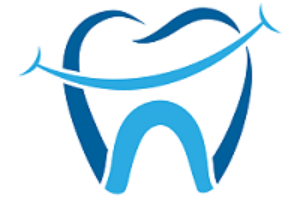Deep Cleaning for Gum Disease: What to Expect
As you sit in the dentist’s chair, anxiously awaiting your turn, you can’t help but wonder what lies ahead. Deep cleaning for gum disease may be a term you’ve heard before, but what does it actually entail?
Well, get ready to find out. In this discussion, we will explore the ins and outs of deep cleaning for gum disease, from understanding the importance of this procedure to managing any discomfort that may arise.
So, brace yourself and prepare to discover the secrets behind this essential dental treatment.
Understanding Gum Disease
To understand gum disease, you need to grasp the basics of its causes and symptoms.
Gum disease, also known as periodontal disease, is a common oral health issue that affects the gums and bone supporting the teeth. It’s primarily caused by the buildup of plaque, a sticky film of bacteria that forms on the teeth.
When plaque isn’t removed through proper oral hygiene practices like brushing and flossing, it can harden into tartar and lead to gum inflammation. This inflammation, known as gingivitis, is the initial stage of gum disease and is characterized by red, swollen gums that may bleed during brushing or flossing.
If left untreated, gingivitis can progress into periodontitis, a more severe form of gum disease. Periodontitis can cause the gums to recede, exposing the tooth roots, and lead to tooth loss if not properly managed.
Other symptoms of gum disease may include bad breath, a persistent bad taste in the mouth, loose teeth, and changes in the alignment of the teeth. Regular dental check-ups and maintaining good oral hygiene habits are essential for preventing and managing gum disease.
Importance of Deep Cleaning
Deep cleaning plays a crucial role in managing gum disease and preventing further complications. When you have gum disease, also known as periodontal disease, the bacteria in your mouth can cause inflammation and infection in your gums. This can lead to a variety of problems, including gum recession, tooth loss, and even bone damage.
Deep cleaning, also called scaling and root planing, is a non-surgical treatment that targets the source of the problem. It involves removing the plaque and tartar buildup from below the gumline, where brushing and flossing can’t reach. By removing these harmful substances, deep cleaning helps to eliminate the bacteria causing the infection and reduces inflammation. This not only prevents further damage to your gums and teeth but also promotes the healing process.
Additionally, deep cleaning can help to improve the effectiveness of your at-home oral hygiene routine by creating a clean and healthy environment for your gums. Regular deep cleaning appointments, along with good oral hygiene habits, can greatly contribute to the long-term management of gum disease and help prevent its progression to more severe stages.
Evaluating Your Oral Health
Before scheduling a deep cleaning appointment for gum disease, it’s important to evaluate your oral health to determine the extent of the problem. By assessing the condition of your gums and teeth, you can better understand the severity of the gum disease and the necessary treatment options. Here are four key factors to consider when evaluating your oral health:
1. Gum bleeding: Pay attention to any bleeding that occurs when you brush or floss your teeth. Bleeding gums can be a sign of gum disease and shouldn’t be ignored.
2. Gum inflammation: Check for any redness, swelling, or tenderness in your gums. These symptoms may indicate gum disease and the need for a deep cleaning.
3. Tooth mobility: Notice if your teeth feel loose or if they’ve shifted position. This could be a sign of advanced gum disease that requires immediate attention.
4. Bad breath: Persistent bad breath that isn’t resolved with regular brushing and flossing may be a result of gum disease. Evaluating your breath can provide valuable insights into your oral health.
The Deep Cleaning Process
If your evaluation reveals signs of gum disease such as bleeding gums or gum inflammation, it’s important to understand what to expect during the deep cleaning process. Deep cleaning, also known as scaling and root planing, is a thorough dental procedure that aims to remove plaque and tartar buildup below the gumline.
During the deep cleaning process, your dentist or dental hygienist will use specialized tools to access and clean the areas around your teeth and gums. They’ll carefully remove the plaque and tartar from both the surfaces of your teeth and the roots, ensuring that all the harmful bacteria and debris are eliminated. This process may take multiple appointments, depending on the severity of your gum disease.
To make the procedure more comfortable, your dentist may administer a local anesthetic to numb the area being treated. This will help alleviate any potential pain or discomfort during the deep cleaning. After the cleaning is complete, you may experience some sensitivity or minor bleeding, but this should subside within a few days.
It’s important to note that deep cleaning isn’t a one-time solution. To maintain healthy gums, it’s crucial to practice good oral hygiene at home and schedule regular dental cleanings. By doing so, you can prevent the progression of gum disease and keep your smile healthy and bright.
Managing Discomfort During Deep Cleaning
To help minimize any discomfort during your deep cleaning, your dentist may offer various techniques and interventions. Here are four ways your dentist may manage discomfort during your deep cleaning:
1. Local Anesthesia: Your dentist may administer a local anesthetic to numb the area being treated. This will help alleviate any pain or discomfort during the cleaning process.
2. Nitrous Oxide: Also known as laughing gas, nitrous oxide is a safe and effective sedative that can help you relax during the procedure. It’s inhaled through a mask and can reduce any anxiety or discomfort you may feel.
3. Topical Anesthetic: Before starting the deep cleaning, your dentist may apply a topical anesthetic gel or spray to the gums. This will temporarily numb the area and provide relief from any discomfort.
4. Breaks and Communication: Your dentist understands that deep cleaning can be uncomfortable, so they’ll give you breaks throughout the procedure. This allows you to rest and communicate any discomfort you may be experiencing.
Aftercare and Recovery
Now that your deep cleaning for gum disease is complete, it’s important to understand what to expect during your aftercare and recovery.
Post-treatment care is crucial in promoting healing and preventing any complications.
You’ll also need to schedule follow-up appointments with your dentist to monitor your progress and ensure that your gum disease is properly managed.
Post-Treatment Care
What steps should you take to care for yourself after undergoing deep cleaning for gum disease?
Here are four important post-treatment care tips to ensure a smooth recovery:
1. Follow your dentist’s instructions: Your dentist will provide specific instructions for aftercare, including how to clean your teeth and gums, what foods to avoid, and any prescribed medications. It’s crucial to follow these instructions diligently for optimal healing.
2. Practice good oral hygiene: Brush your teeth gently twice a day with a soft-bristled toothbrush and use an antimicrobial mouthwash recommended by your dentist. Floss daily to remove plaque and food particles between your teeth.
3. Avoid smoking and alcohol: Smoking and drinking alcohol can hinder the healing process and increase the risk of infection. It’s best to abstain from these habits to promote a speedy recovery.
4. Maintain regular dental check-ups: Schedule follow-up appointments with your dentist to monitor your progress and ensure that your gums are healing properly. Regular dental visits can help prevent future gum disease and maintain your oral health.
Healing Process
After undergoing deep cleaning for gum disease, it’s important to understand the healing process and follow proper aftercare and recovery guidelines.
The healing process can vary from person to person, but generally, you can expect some discomfort and sensitivity in the treated areas. It’s normal to experience minor bleeding and swelling for a few days after the procedure.
To aid in the healing process, it’s crucial to maintain good oral hygiene practices, such as brushing twice a day and flossing daily. Avoiding tobacco products and maintaining a balanced diet will also promote healing.
Your dentist may recommend using a mouth rinse or prescribe antibiotics to prevent infection. It’s important to keep all follow-up appointments to monitor your progress and ensure proper healing.
Follow-Up Appointments
To ensure proper aftercare and recovery, it’s essential to schedule and attend your follow-up appointments. These appointments are crucial in monitoring your progress and making any necessary adjustments to your treatment plan.
Here’s what you can expect during your follow-up appointments:
1. Evaluation: Your dentist or periodontist will examine your gums to assess the healing process and check for any signs of infection or complications.
2. Cleaning: If there’s any residual plaque or tartar buildup, your dental professional will perform a thorough cleaning to maintain the health of your gums.
3. Education: Your dental team will provide guidance on oral hygiene practices and recommend any additional treatments or lifestyle changes to prevent gum disease recurrence.
4. Maintenance: Regular follow-up appointments will be scheduled to ensure the long-term success of your treatment and to monitor the overall health of your gums.
Long-term Benefits of Deep Cleaning
Regular deep cleaning can provide significant long-term benefits for individuals with gum disease. By removing the buildup of plaque and tartar from your teeth and gums, deep cleaning can help prevent further damage and progression of gum disease. This can ultimately save you from more extensive and costly dental treatments in the future.
One of the main long-term benefits of deep cleaning is the reduction of gum inflammation. Removing the bacteria and toxins from your gums allows them to heal and reattach to the teeth, reducing the pocket depths that are characteristic of gum disease. This can help to stabilize your gum health over time and prevent the need for more invasive procedures like gum surgery.
In addition to improving gum health, deep cleaning can also have positive effects on your overall oral health. By removing the plaque and tartar that contribute to tooth decay and bad breath, deep cleaning can help you maintain a healthier and fresher smile. It can also improve the effectiveness of your at-home oral hygiene routine, making it easier for you to keep your teeth and gums clean between dental visits.
Frequently Asked Questions
How Long Does It Take for Gum Disease to Develop?
Gum disease can develop over time, and the length of time it takes can vary from person to person. Several factors can contribute to the development of gum disease, such as poor oral hygiene, smoking, and certain medical conditions.
It’s important to maintain regular dental check-ups and cleanings to prevent gum disease. If you suspect you may have gum disease, consult with your dentist for a proper diagnosis and treatment plan.
Can Deep Cleaning Completely Cure Gum Disease?
Deep cleaning can be an effective treatment for gum disease, but it may not completely cure it. The goal of deep cleaning is to remove the plaque and tartar buildup that can contribute to gum disease.
However, if the disease has progressed to a more severe stage, additional treatments may be necessary. It’s important to follow a good oral hygiene routine and visit your dentist regularly to prevent gum disease from worsening.
Are There Any Alternative Treatments to Deep Cleaning for Gum Disease?
Are there any alternative treatments to deep cleaning for gum disease?
Yes, there are alternative treatments available for gum disease. However, deep cleaning, also known as scaling and root planing, is the most effective method for removing tartar and bacteria below the gumline.
Alternative treatments may include antibiotics, laser therapy, or surgery, depending on the severity of the gum disease.
It’s best to consult with your dentist or periodontist to determine the most suitable treatment option for your specific condition.
What Are the Common Signs and Symptoms of Gum Disease?
If you’re wondering about the common signs and symptoms of gum disease, it’s important to pay attention to a few key things.
One of the most common signs is bleeding gums, especially while brushing or flossing.
You might also notice swollen or tender gums, bad breath, or receding gums.
Another indication could be loose teeth or a change in your bite.
If you experience any of these symptoms, it’s essential to seek dental care to prevent further complications.
Is Deep Cleaning Covered by Dental Insurance?
Deep cleaning for gum disease, is it covered by dental insurance?
Yes, deep cleaning is typically covered by dental insurance. However, coverage may vary depending on your specific insurance plan. It’s important to check with your insurance provider to understand exactly what’s covered and any potential out-of-pocket costs you may incur.
Regular dental check-ups and cleanings can help prevent gum disease, but if it does occur, deep cleaning is an effective treatment option to maintain oral health.
Conclusion
Overall, deep cleaning is an essential treatment for gum disease that helps improve oral health and prevent further complications. By thoroughly cleaning the teeth and gums, deep cleaning can effectively remove plaque and tartar buildup, reducing inflammation and promoting gum tissue healing.
Although discomfort may be experienced during the procedure, proper aftercare and recovery can lead to long-term benefits, such as healthier gums and learn this here now a reduced risk of gum disease recurrence.
So, don’t hesitate to schedule a deep cleaning with your dentist to ensure optimal oral hygiene.
Was this helpful?

Welcome to my website! I am Levi Halpern, a dedicated and passionate professional Cosmetic Dentist with extensive experience in Orthodontic Innovations, Periodontal Care, and Pediatric Dental Care. I am thrilled to have the opportunity to share my knowledge and expertise with you.

